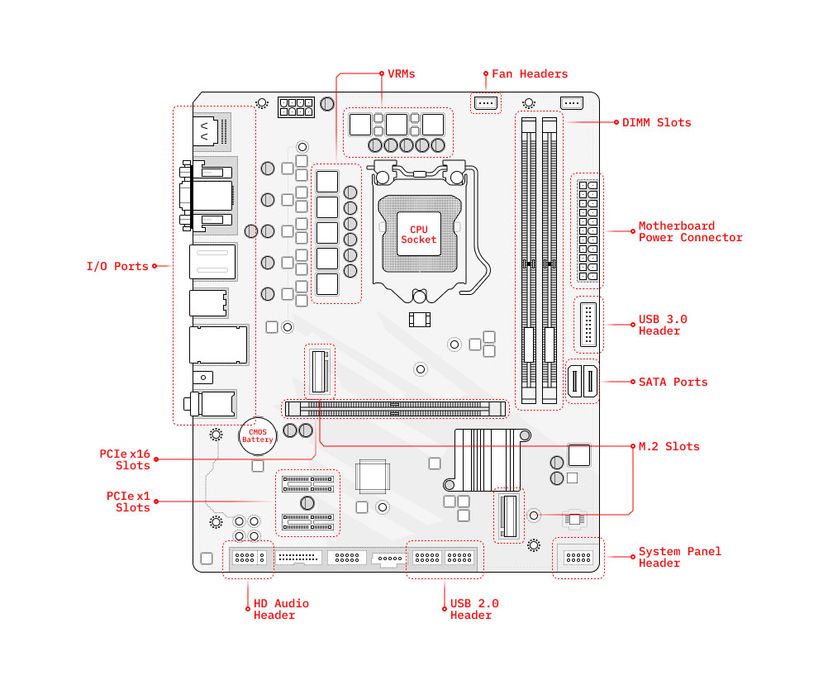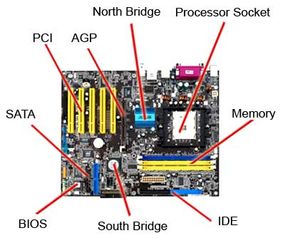Form Factor

The motherboard's main job is to hold the computer's microprocessor chip and enable other parts of the computer to connect to it. Everything that runs the computer or enhances its performance is either part of the motherboard or plugs into it via a slot or port.
The shape and layout of a motherboard is called its form factor. The form factor affects where individual components go and the shape of the computer's case. There are several specific form factors that most PC motherboards use so that they can all fit in standard cases.
Advertisement
The form factor is just one of the many standards that apply to motherboards. Here are some of the other standards:
- The socket for the microprocessor determines what kind of central processing unit (CPU) the motherboard can use.
- The chipset is part of the motherboard's logic system and is usually made of two parts — the northbridge and the southbridge. These two "bridges" connect the CPU to other parts of the computer.
- The basic input/output system (BIOS) controls the most basic functions of the computer and performs a self-test every time you turn it on. Some systems feature dual BIOS, which provides a backup in case one fails or in case of error during updating.
- The real time clock chip is a battery-operated chip that maintains basic settings and the system time.
The slots and ports found on motherboards include:

- Peripheral Component Interconnect (PCI) — connections for video, sound and video capture cards, as well as network cards
- Accelerated Graphics Port (AGP) — dedicated port for video cards
- Integrated Drive Electronics (IDE) — interfaces for hard drives
- Universal Serial Bus (USB) — external peripherals
- Memory slots
Some motherboards incorporate newer technological advances:
- Redundant Array of Independent Discs (RAID) controllers allow the computer to recognize multiple drives as one drive.
- PCI Express is a newer protocol that acts more like a network than a bus (circuit that connects one part of the motherboard to another). It can eliminate the need for other ports, including the AGP port.
- Rather than relying on plug-in cards, some motherboards have on-board sound, networking, video or other peripheral support.
Many people think of the CPU as one of the most important parts of a computer. We'll look at how it affects the rest of the computer in the next section.